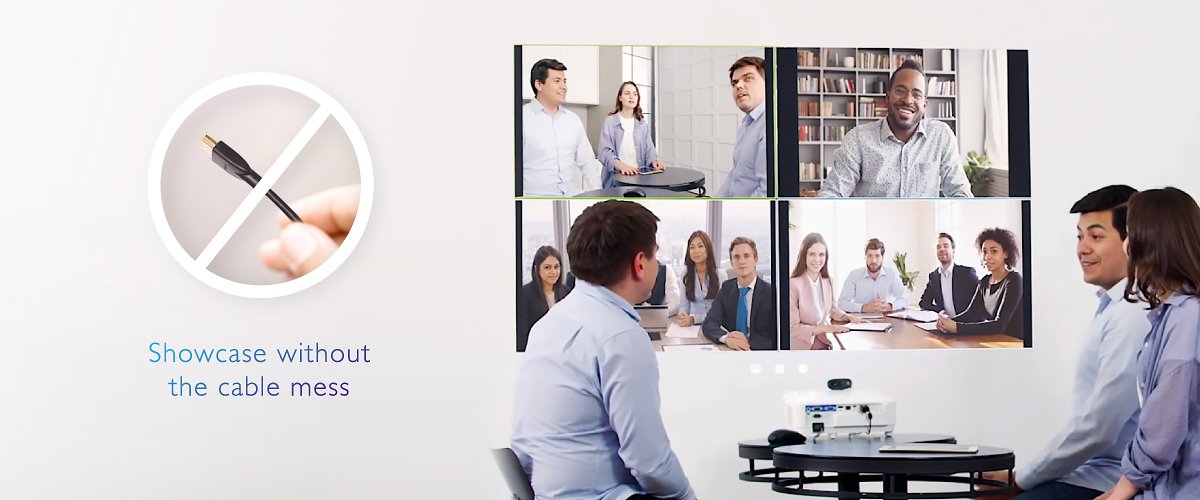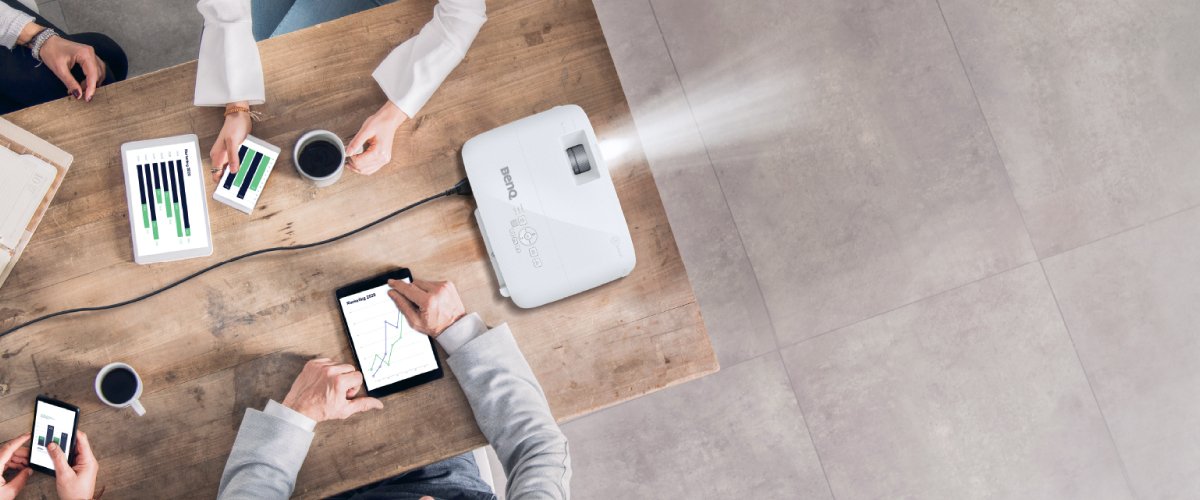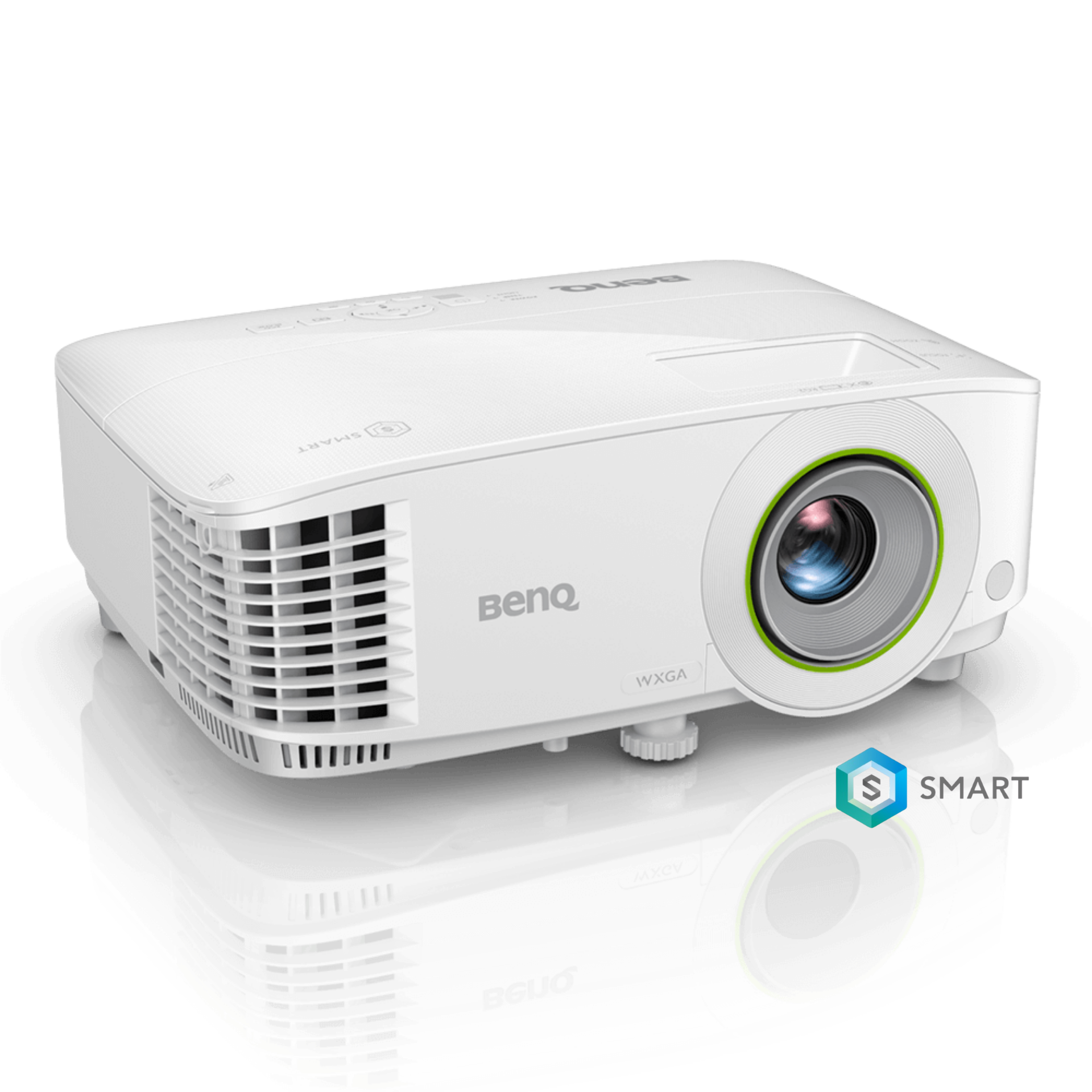Safe Workplace Reopening with User-Friendly Wireless Projection Solutions
- BenQ
- 2020-10-01
As businesses and organizations face the reality of needing to reopen and try to reclaim as much normalcy as possible following the COVID-19 epidemic, new technologies make the transition easier. Especially at SMBs, managers, human resource departments, and IT support teams all need to consider systems that enable a resumption of in-office work while minimizing physical contact and controlling possible infection vectors. Also, technology that combines local and virtual or remote attendance has the potential to greatly ease reopening and going back to full productivity.
Among these technologies, smart wireless projectors offer many advantages and seamlessly integrate into SMBs and other organizations without a steep learning curve for employees to grapple with. They’re nearly invisible to users, but contribute much to bouncing back from difficult times.

Thanks to a nearly contactless, touchless design, smart wireless projectors comply with the need to reduce potential germ spread and likewise go a long way towards promoting an increasingly touchless office environment.
You may have heard that many of the world’s leading technology companies have announced plans to remain primarily work-from-home for the foreseeable future. Google, Facebook, and to a large extent Microsoft have much of their workforce operating remotely at the moment. That’s doable because these organizations have a long tradition of remote work and the facilities to sustain such practices. They also have vast resources and access to a durable data sharing backbone and their own cloud infrastructures, with dedicated teams working 24/7 to keep collaboration smooth.
Small and medium-sized businesses do not have the luxury of these tools, and require close collaboration among more compact, less hierarchical workforces. Without in person attendance, productivity suffers at many SMBs. Therefore, there’s a much greater need to reopen workplaces.
While employees at major tech companies have extensive experience with working from home, SMB team members may need more mentoring and face to face interaction to work at peak productivity and motivation.
SMBs also need to host clients and vendors, and the stakes at every meeting are bigger than for mega corporations. In short, while circumstances caused by the health crisis had little effect on the highly skilled and highly compensated “elite” workforce of the biggest tech outfits and their massive IT resources, hardworking SMB team members who need to do it all themselves have suffered and thus have more reason to resume normalcy as quickly and as efficiently as possible.
Basics of Safe Office Reopening
In the effort to create workplaces that are nearly pandemic-proof, two of the most essential priorities are reduced density and seating layout.
Offices should strive to maintain social distancing if viable, which can be helped by a more spaced out seating arrangement. While there’s no need to panic, if organizations and enterprises wish to reduce the risk of infection borne by team members, developing plans for so-called pandemic proofing is vital. Smart wireless projectors that work with one-touch ease certainly fit into this paradigm.
The core tenets should be lower density communal spaces and social distancing or workstation spacing, and an overall stronger focus on hygiene best practices. Click on the respective links to learn more.
Alongside lower density workplaces, or de-densified offices, reduced touch and contact serve as primary tools in the effort to minimize potential health risks.
Whether you choose to think of this as a contact-less or touch-less office is up to you. Of course, it’s impossible and undesirable to entirely remove physical contact, but reducing it within the boundaries of common sense certainly helps alleviate concerns team members may have about going back to the office.
Especially at SMBs, team members thrive on passion. It’s not just a job or a paycheck, but a conscious career choice to be part of a smaller team, working together towards a clear common goal. That’s something larger organizations often lack, and SMB leadership should encourage the communal aspect of enterprises while remaining conscious of safety.
People are social creatures as we all know, and the loneliness of working from home isn’t for everybody. Many folks simply work better when near other humans. And while traditionally cubicles and other office layouts offered simple privacy, now they can double as very helpful barriers to the potential spread of germs. Partitions are the first line of defense, and a visible reinforcement of team member morale. While close quarters, open plan seating arrangements may have been all the rage in the past, right now they’re probably not the best idea. Spacing out people and having partitions isn’t anti-social, it’s practical and simply on the safe side.
“64% of HR leaders are making employee experience a higher priority when planning the return to work”
Gartner Survey 05.20.2020
All of these measures must be clearly communicated to team members. Importantly, office culture at its core should not change. People want to return to offices because they need human contact and in person collaboration with coworkers. The changes made to SMB environments should all be logical and transparent, as well as user friendly – for example the smart wireless projectors we mentioned. You are not trying to create a cold, sterile workplace. Rather a safer one that’s kept up with current global conditions and realities. The employee experience should not fundamentally change, and may even improve as workers realize organizational leadership has a coherent, sustainable plan to protect everyone in the team while ensuring work remains fulfilling and productive.
The concepts of reduced touch and contact aim to eliminate annoyances such as constant disinfection with alcohol or nearly-obsessive hand washing. The goal isn’t to make everyone a germaphobe but rather control and reduce germ spread. That’s why devices and technologies with minimal contact are so useful in this new era. Employees that don’t repeatedly press the same buttons or fiddle with a load of cables logically face a lower risk of contracting an infection.
Wireless tech removes most of the cables, and smart wireless devices even allow users to control them remotely from personal devices like phones.

Set up a one-touch smart wireless projector in a meeting room and you’ve instantly eliminated a host of touch locations that previously would have been potential infection flashpoints. Between the remote control, keypad, power cable, HDMI cable, and probably a shared laptop or two, that’s a lot of contact. New tech helps control that.
A related aspect that provides both user satisfaction and reduced risk is simplicity
A smart wireless projector that arrives with all necessary apps installed and that doesn’t require any drivers takes seconds to power on and get started with. You don’t need IT to come and help, so that’s less people in the room. And team members don’t need to ponder what to do, meaning no frustration and more to the point productivity. Good technology that doesn’t require people to stop what they’re doing is even more important in a pandemic-proof office, because every stop is an added step, and every added step means some extra risk.
In the next articles we’ll delve into what makes a smart wireless projector a great part of enhanced employee experiences in the new office model, looking closer at specific features and functions.





